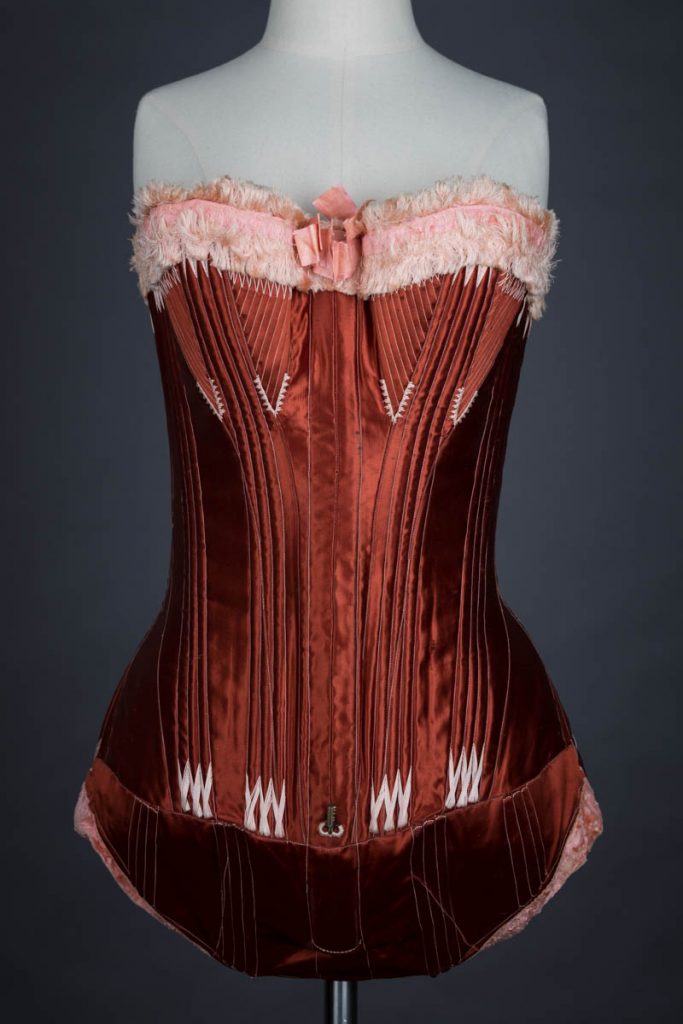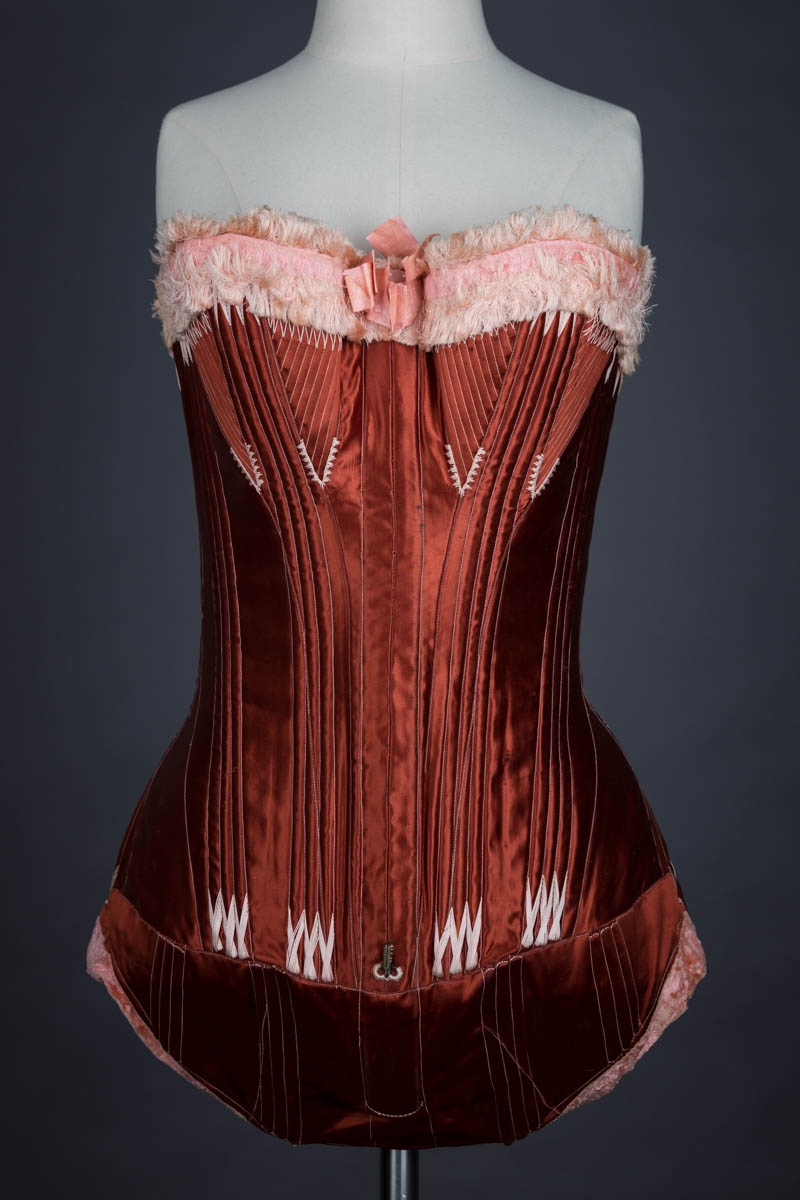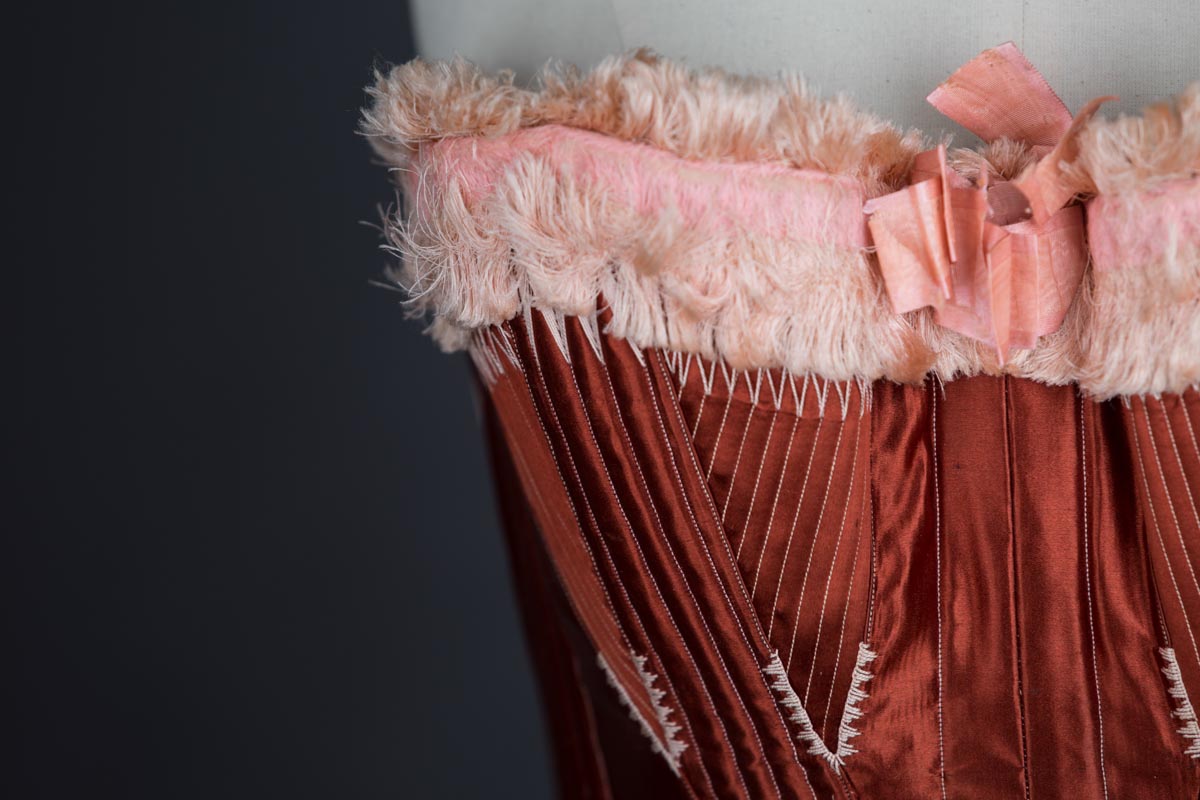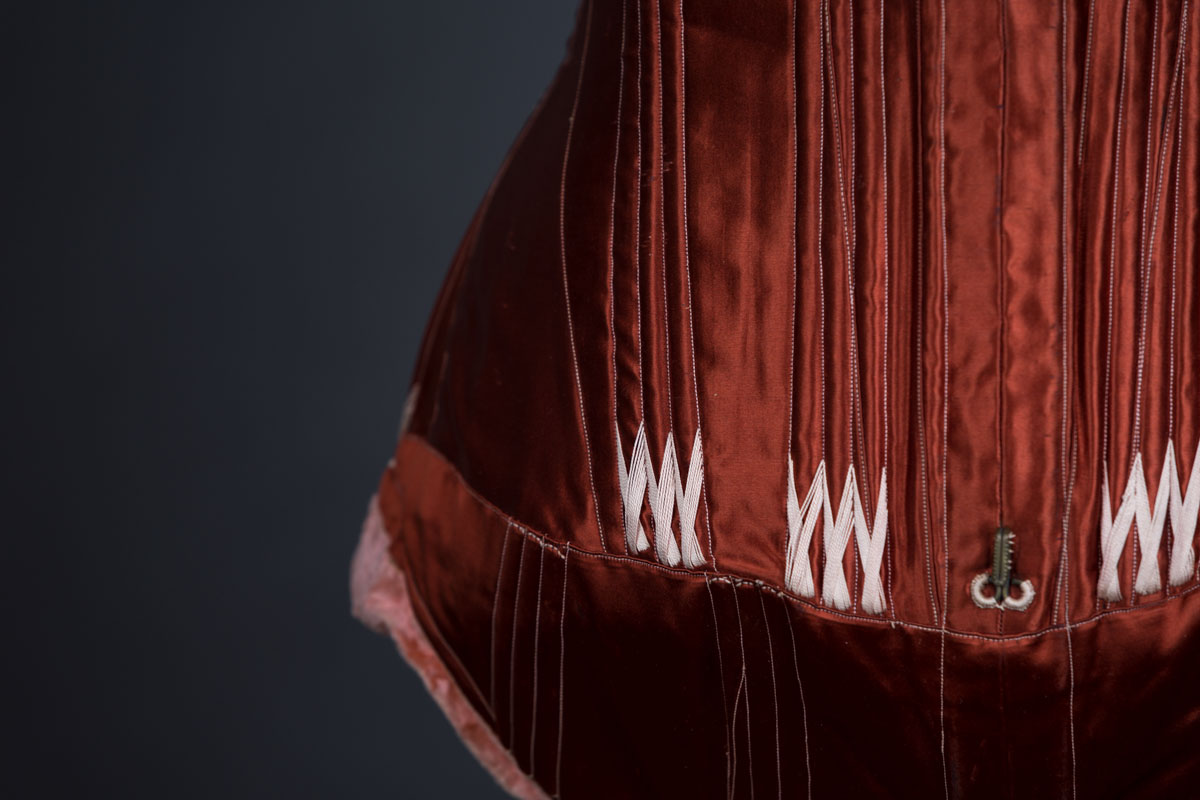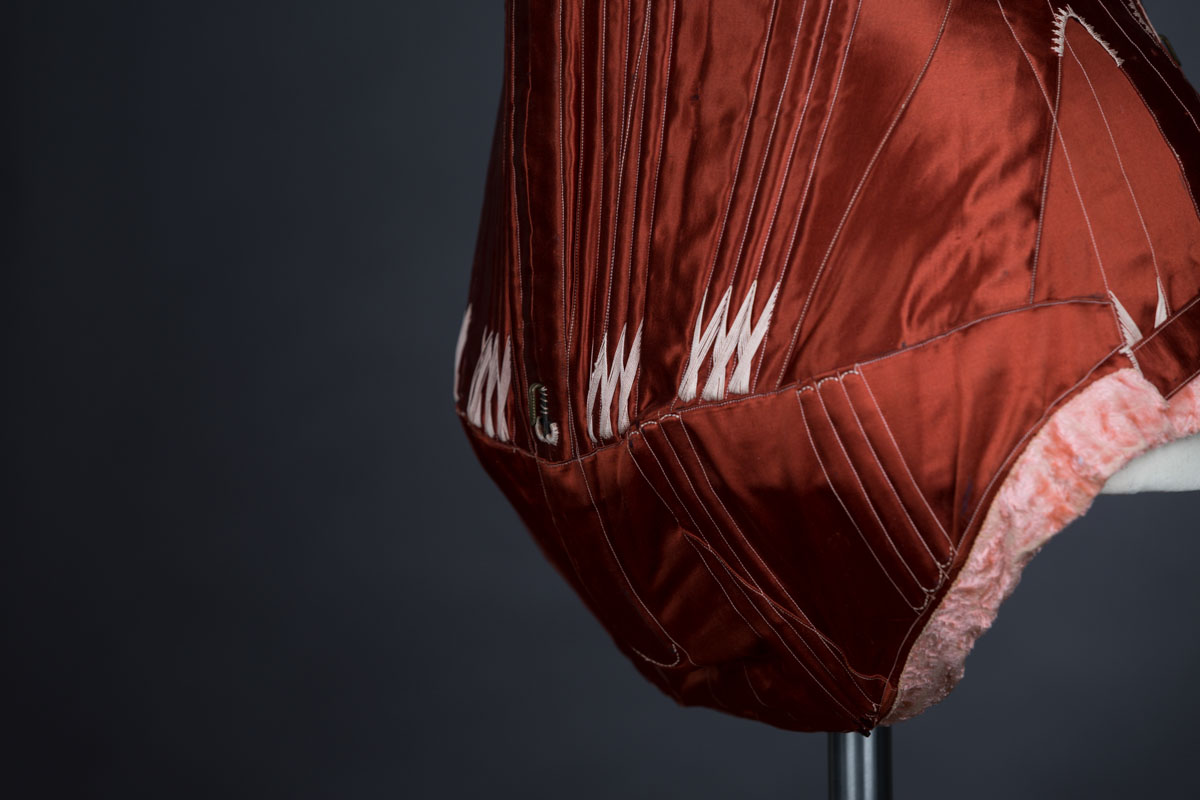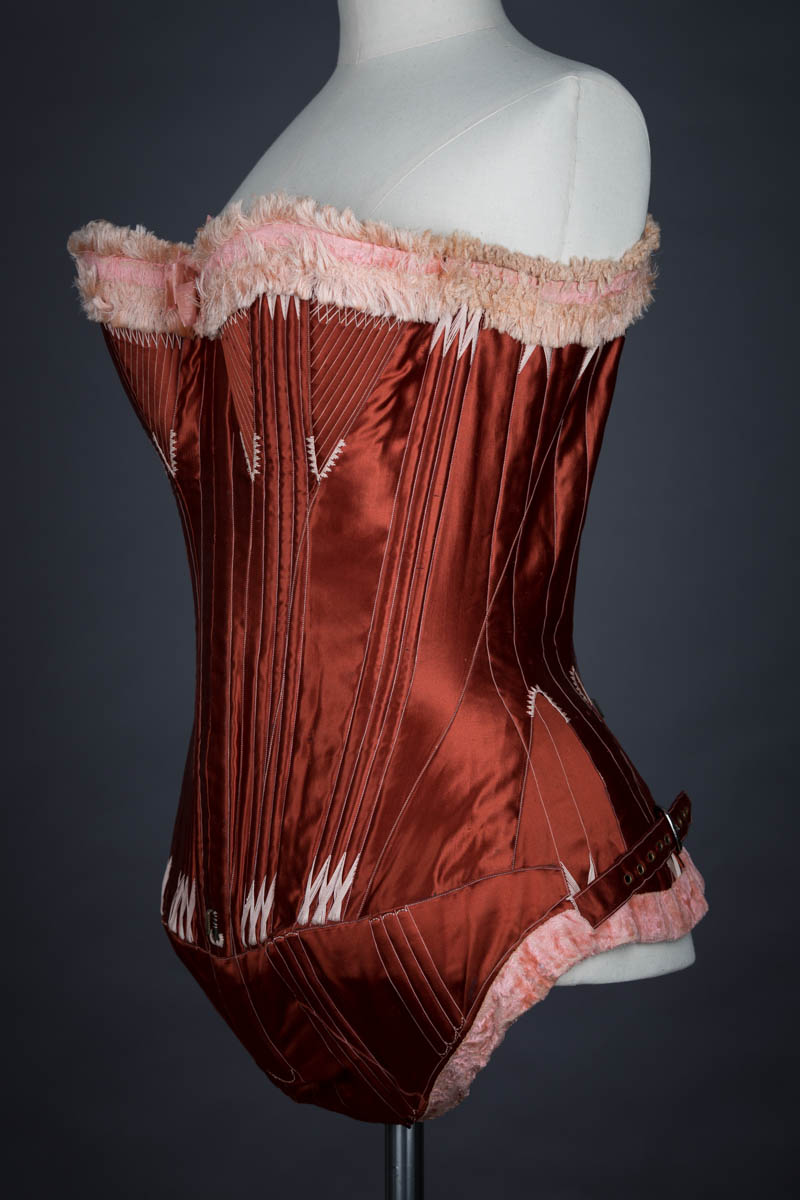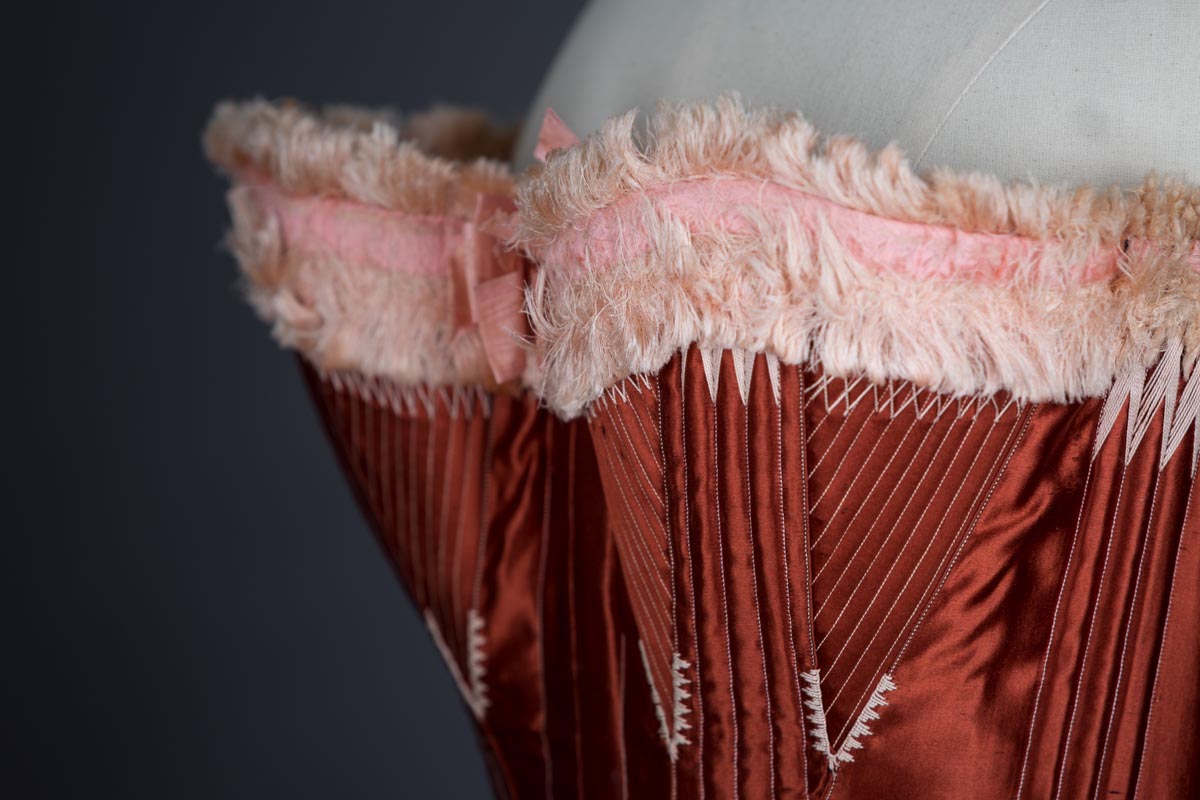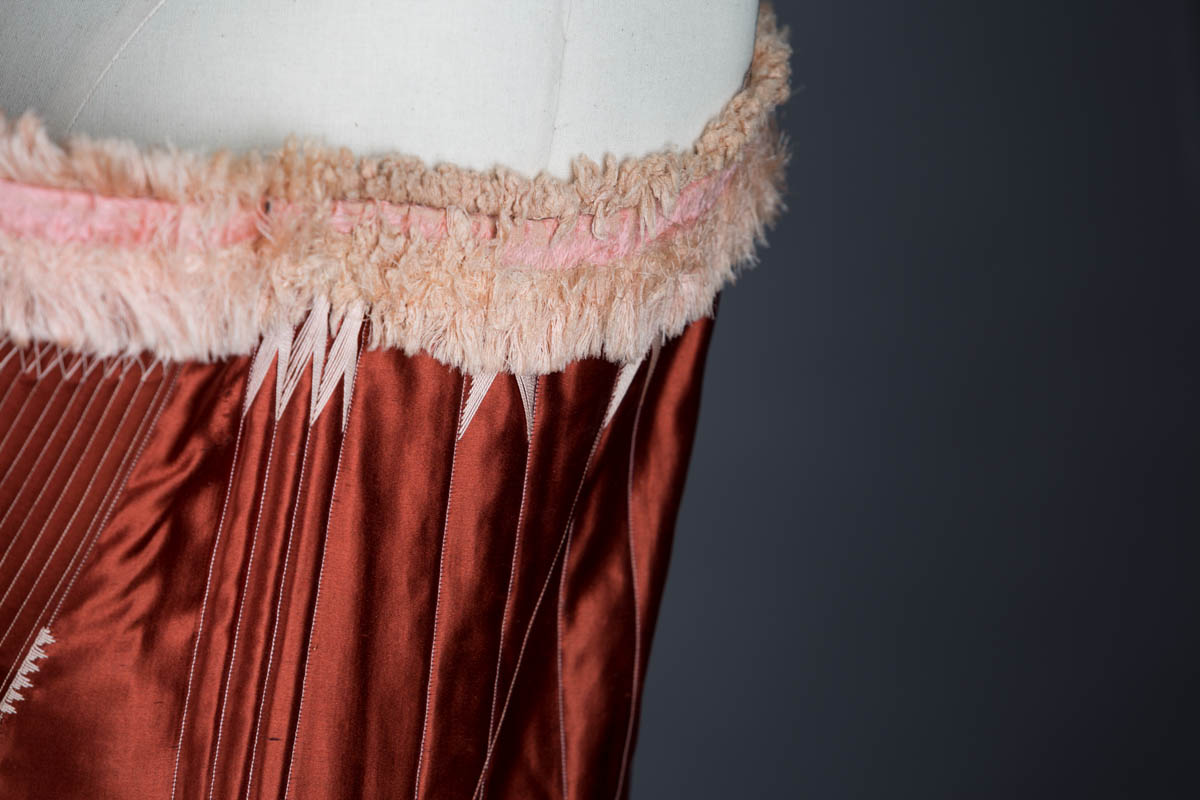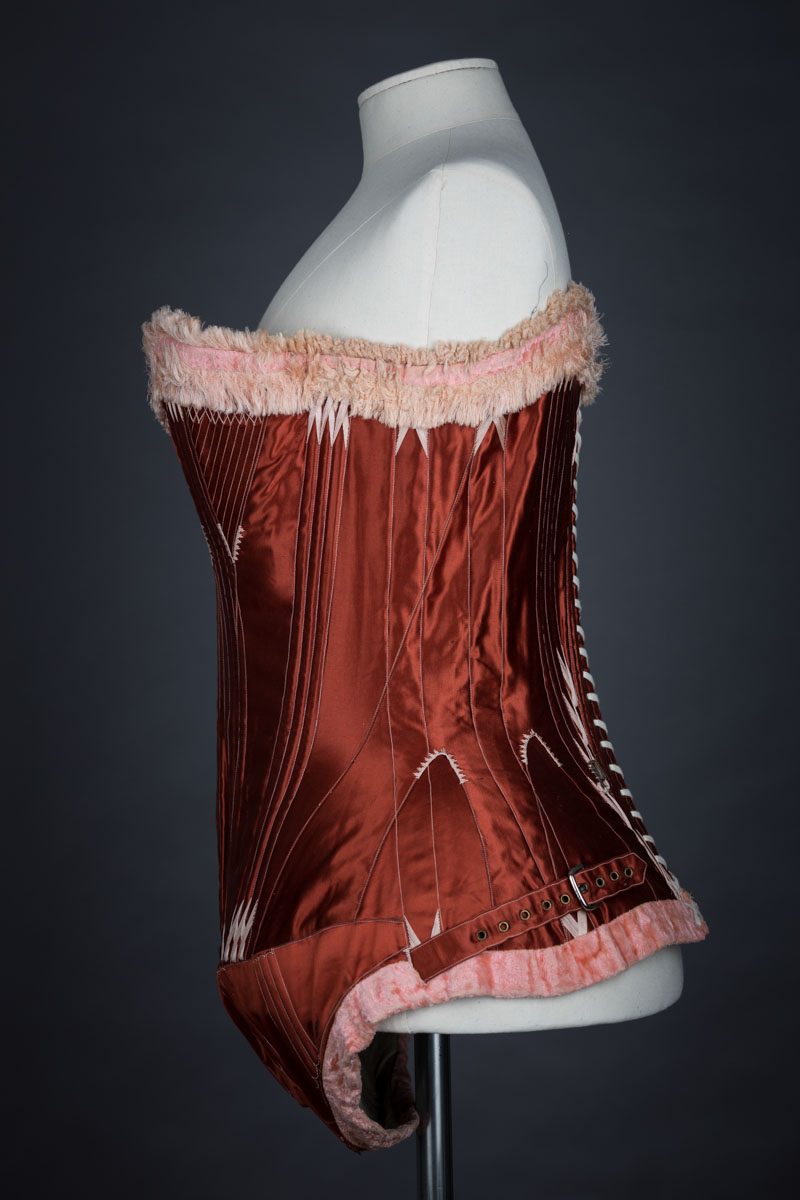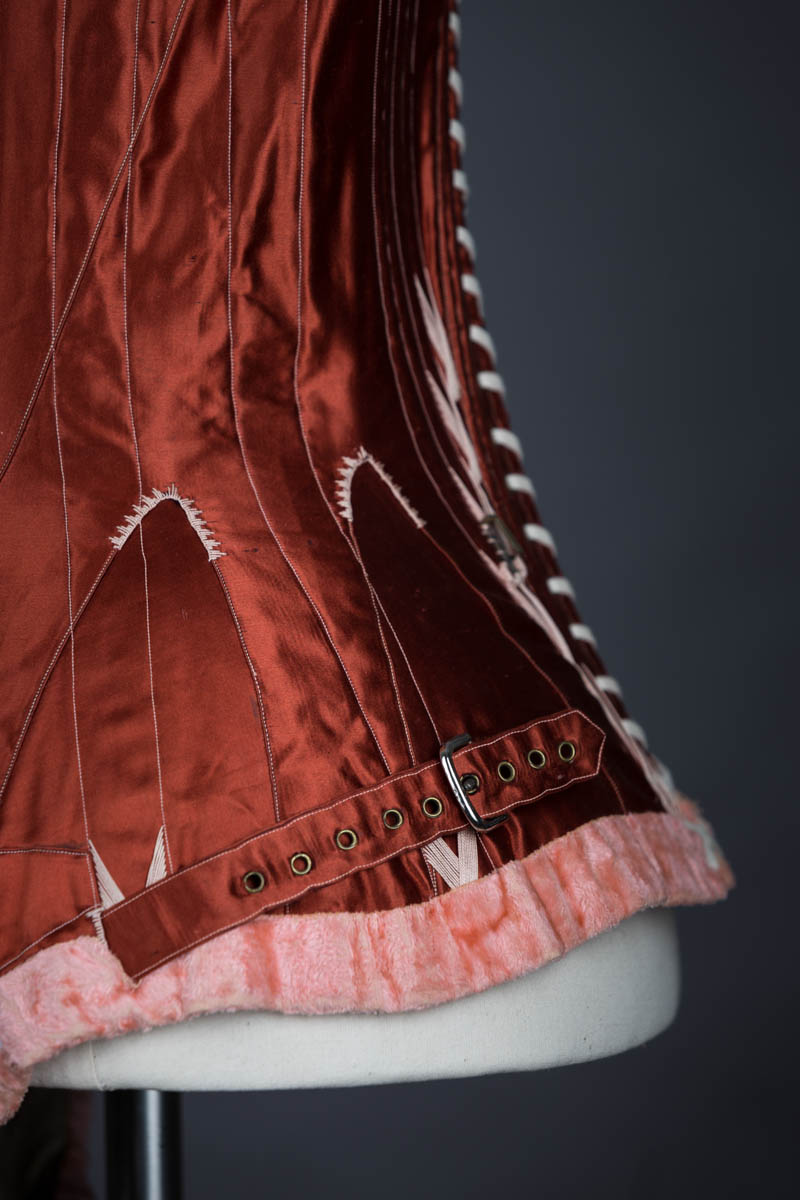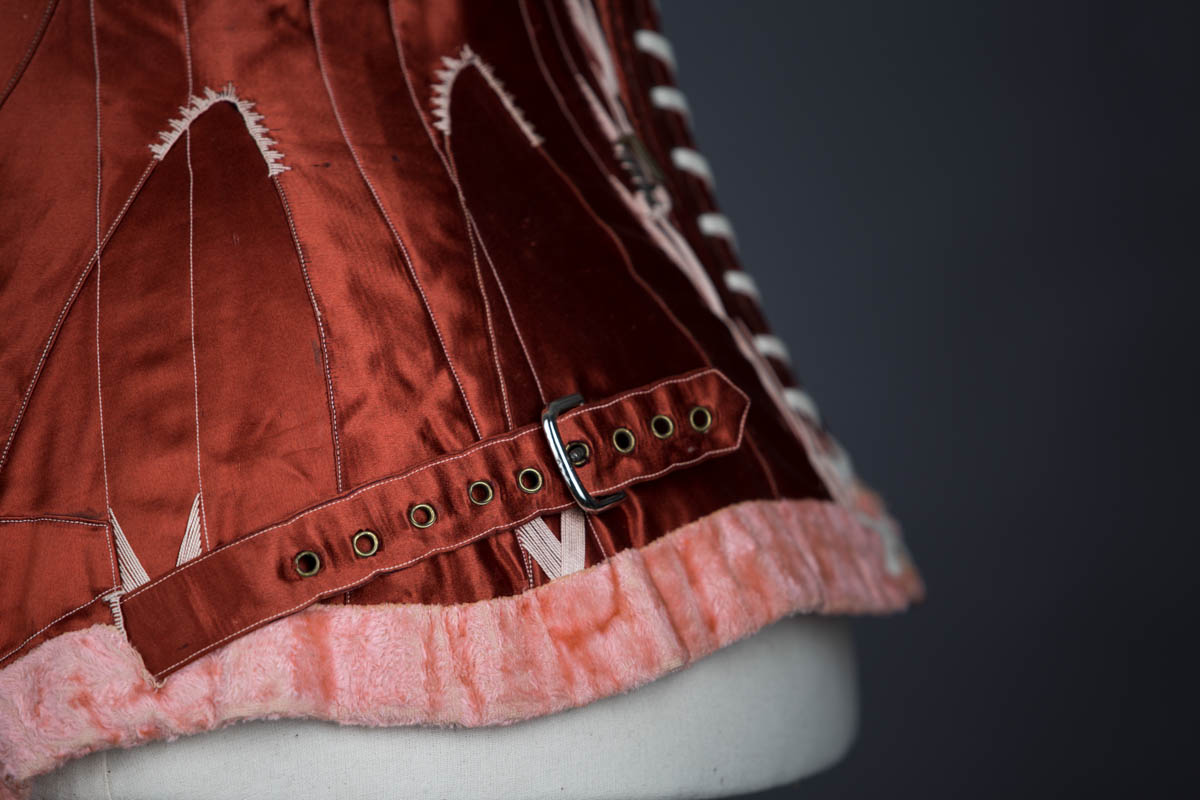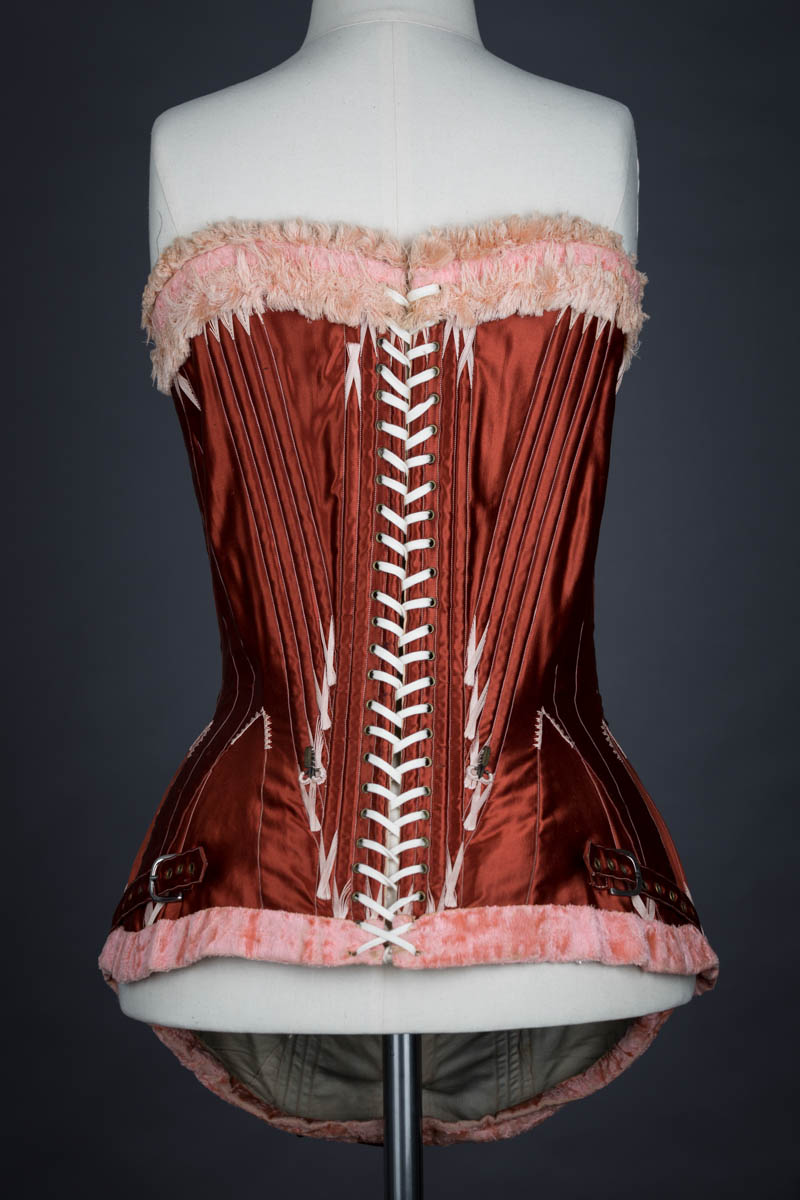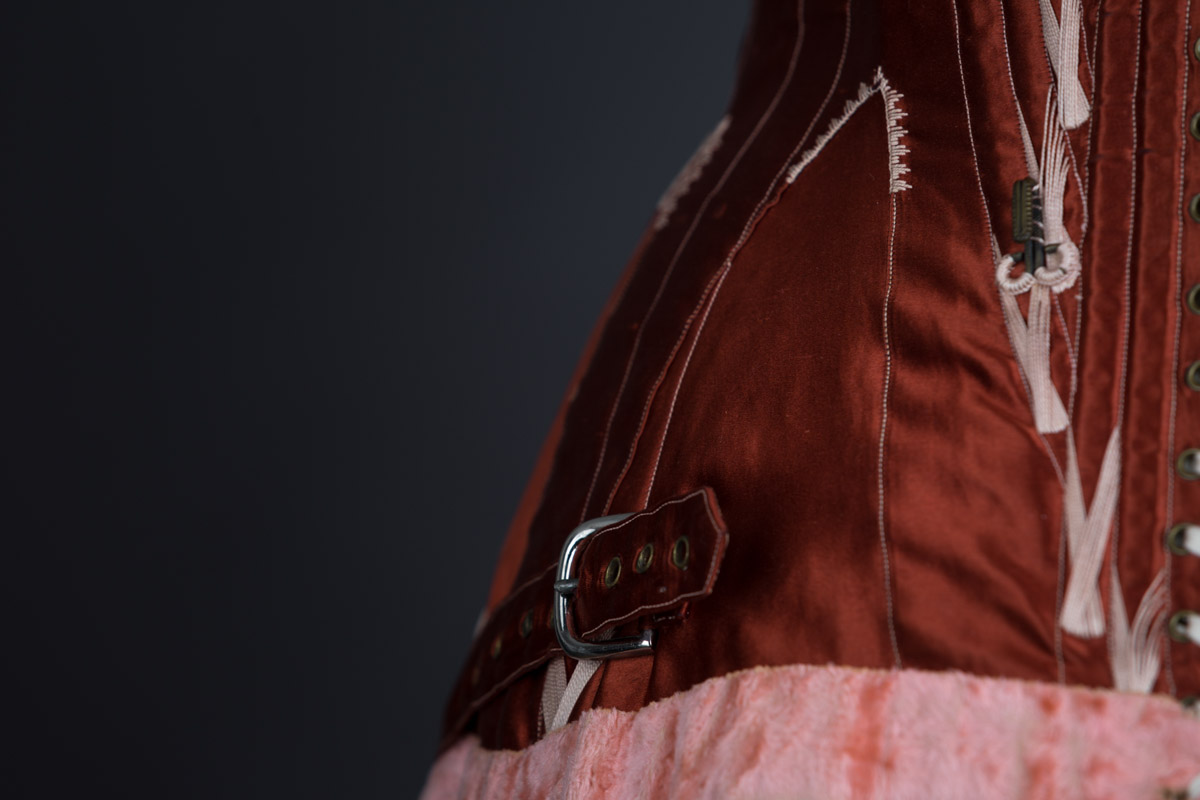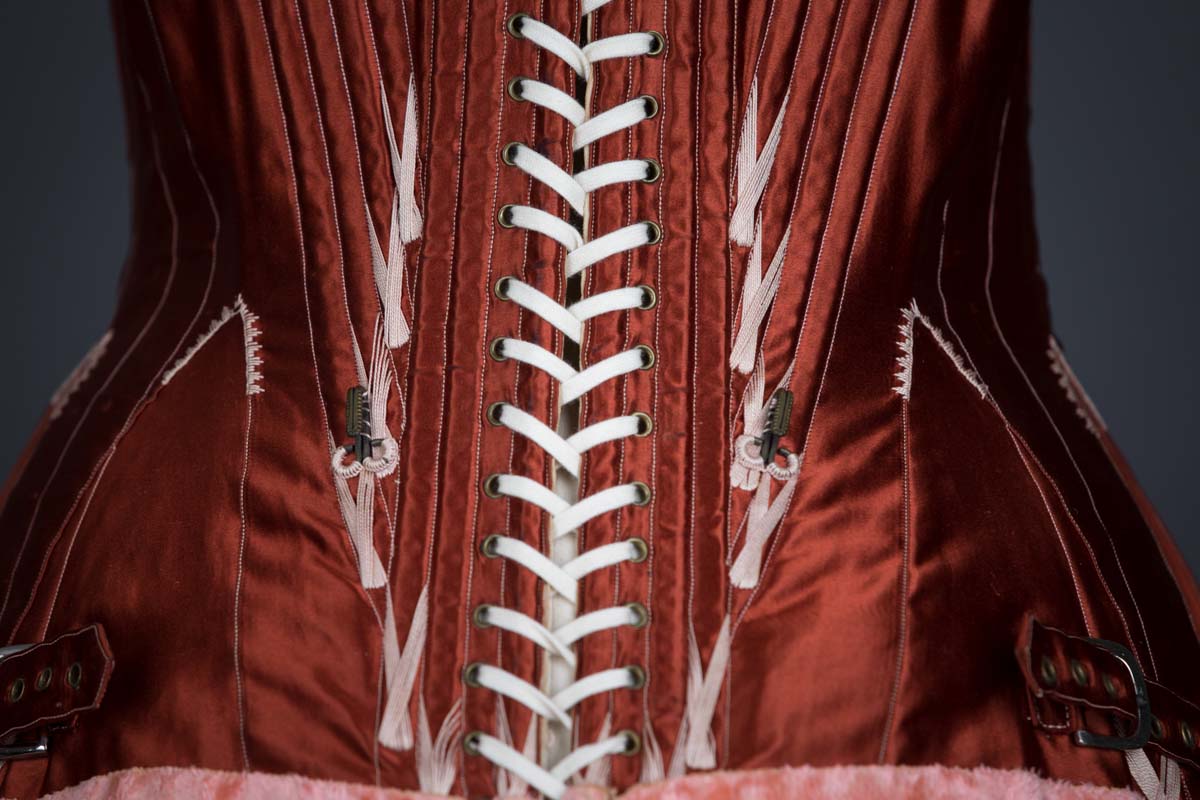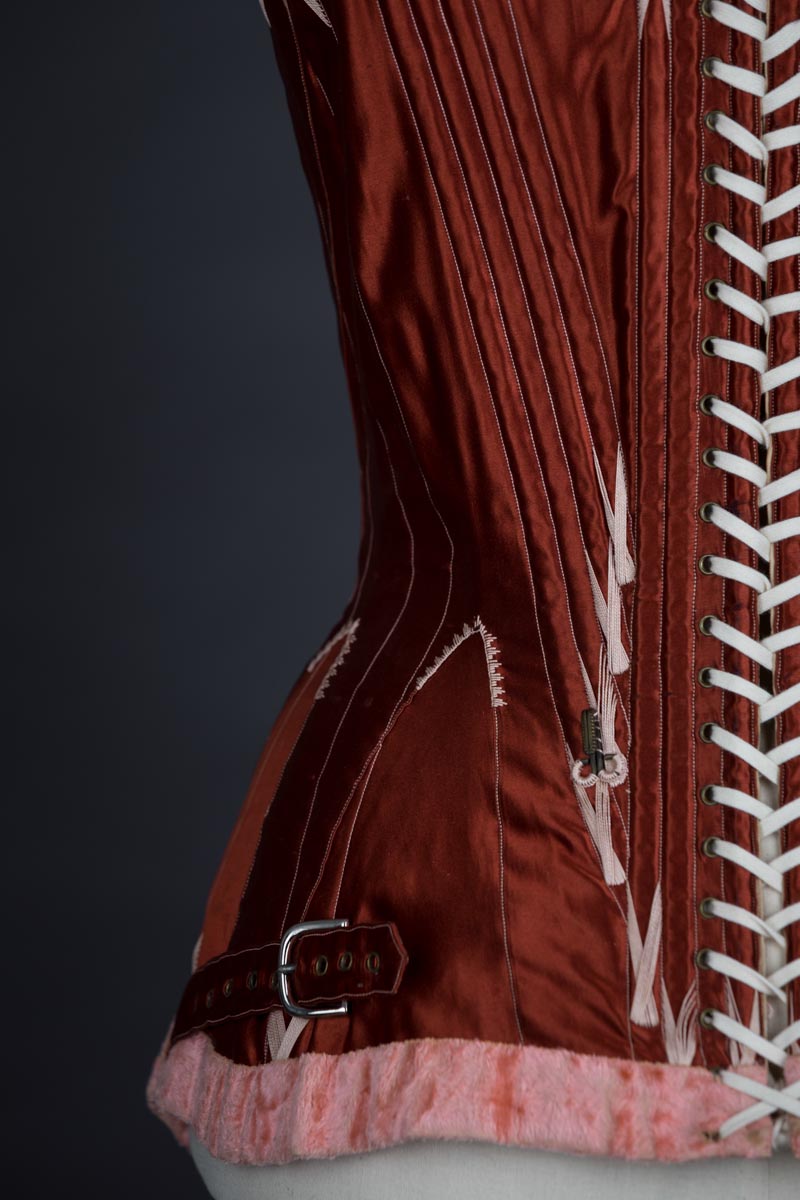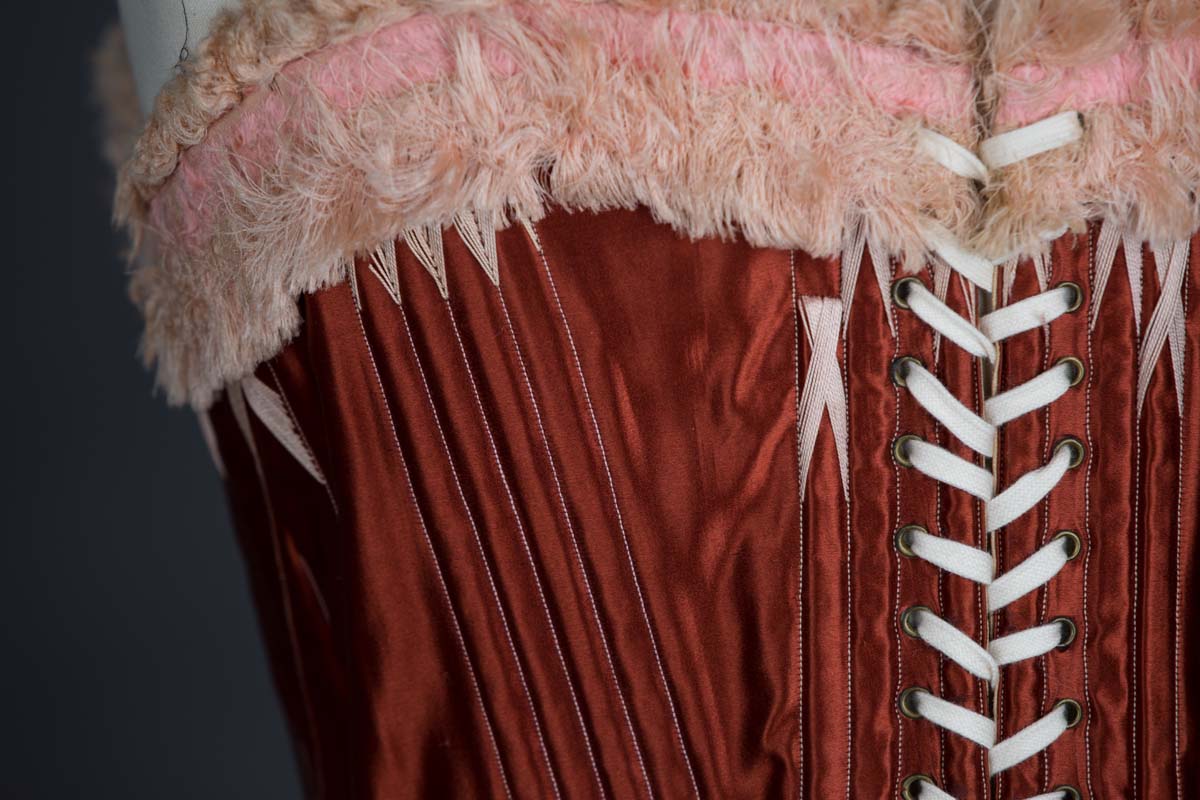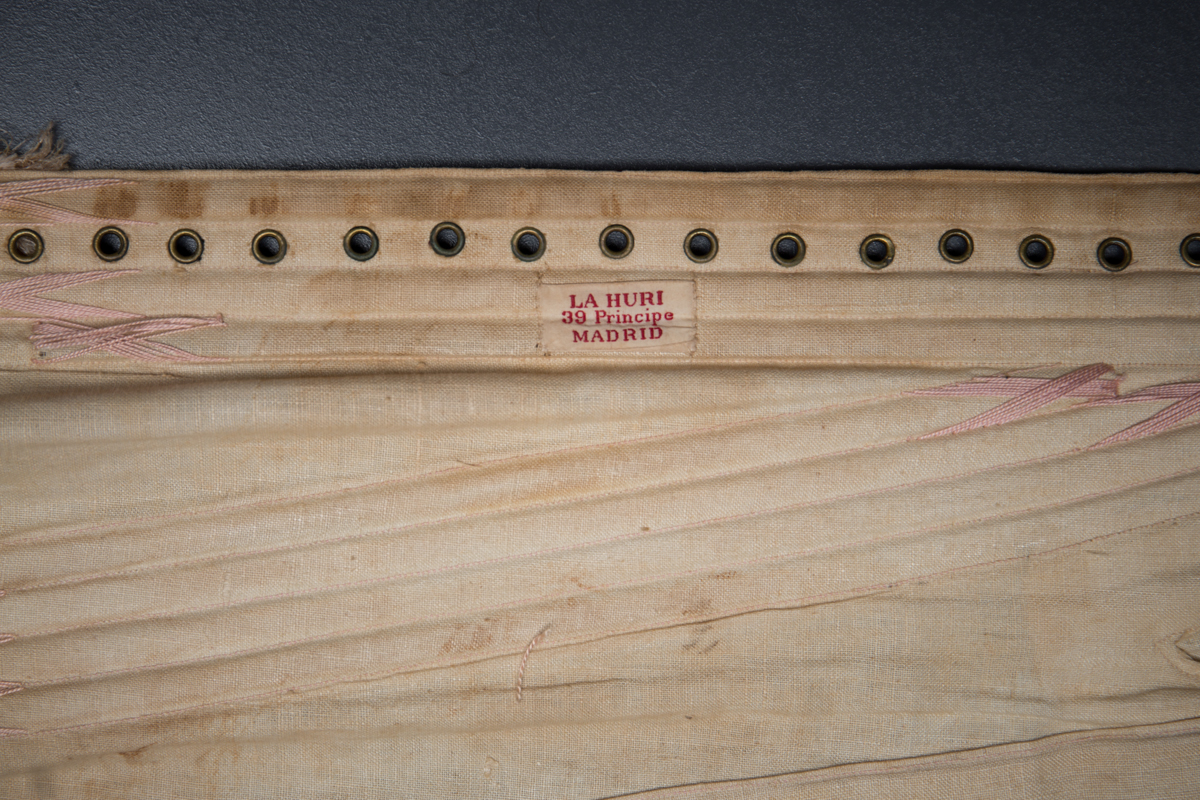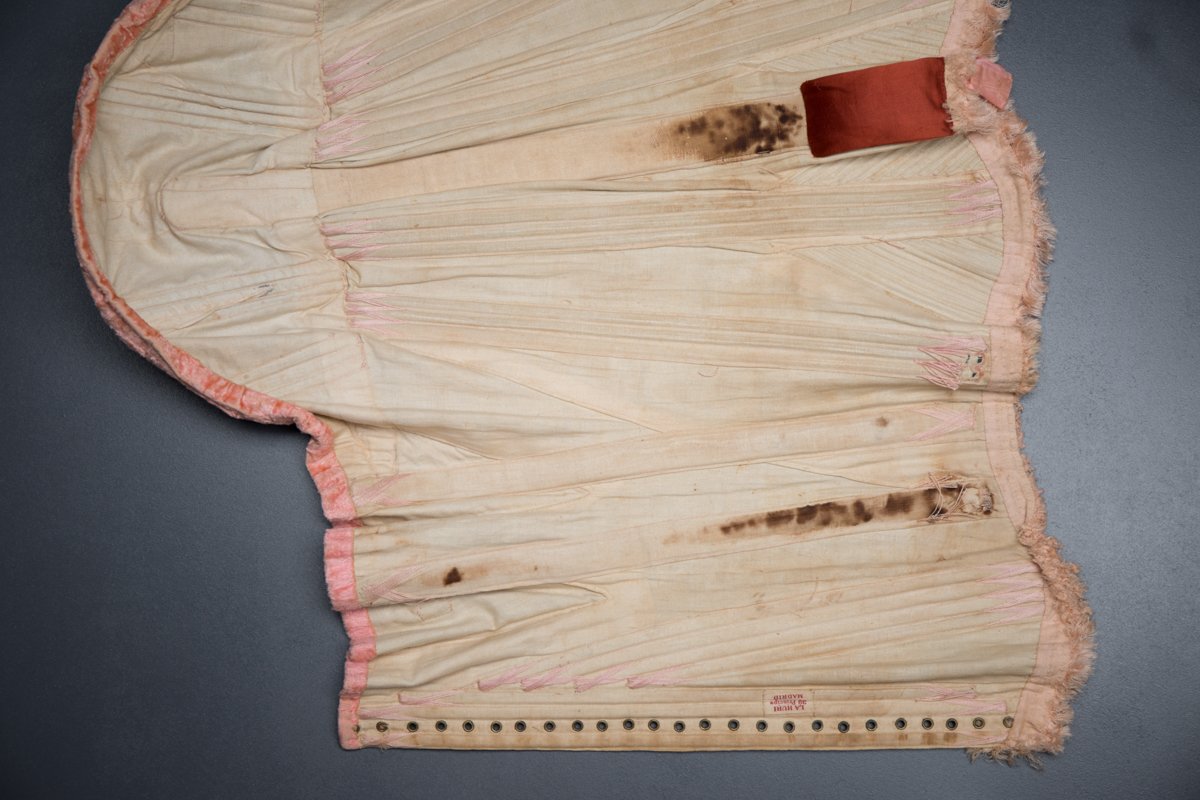Date: c. 1885
Origin: 39 Principe, Madrid, Spain
Fabric: Silk
Brand: La Huri
This corset was created to be worn during the course of pregnancy, with a number of design details that allowed this garment to adapt to a changing body shape and to maintain support without constriction. Whilst the concept of a pregnancy corset may seem barbaric by modern standards, this garment bears a number of similarites to modern maternity belts, and would have been worn by an individual who had relied on structured foundation garments for their entire adult life. As well as offering support to the abdomen, this corset would have offered much needed back support.
The corset is created from an outer layer of red silk, with an interior of cotton coutil. The pattern uses multiple gusset inserts at the bust and hips for shaping, with a separate darted panel under the abdomen. The corset is heavily boned throughout, with approximately 94 pieces of baleen. Wider channels towards the back of the garment have had their internal structure removed. By the width, these would have likely been steel bones without much flexilibity. A wide steel bone offers support at the centre front of the garment. This centre bone is inserted into a coutil channel, and has a silk encased pad at the top to prevent discomfort. The channel curves in towards the bottom of the garment around the abdomen.
The bone channels are mostly stitched into the layers of silk and coutil, with the majority of the bones secured with pink silk decorative flossing embroidery. Gusset insert panels are further re-enforced with flossing embroidery. Machine stitching is in a contrast cream colour. The top line of the corset is trimmed with a pink and cream velvet and silk fur. A silk ribbon rosette embellishes the centre front. The bottom edge of the corset is trimmed with the same pink velvet, which is also folded into the interior of the garment, likely to maintain a modicum of padding and comfort during wear.
The hips of the corset feature silk straps with eyelets and buckles that allow for adjustment of the hip measurement, likely to allow the fit to be modified throughout the course of pregnancy. The corset has no front opening, and would likely have required another person to help with the act of dressing. It fastens with lacing through the centre back, through one part brass eyelets. The original laces have been lost, and were replaced with contemporary cotton lacing for these photos. 3 petticoat hooks are hand sewn onto the corset, at the centre front and either side of the centre back eyelets. These would have allowed for petticoats to be secured to the corset.
Although it is difficult to find further information on the creator of this garment ‘La Huri’, Museo del Traje holds another maternity corset created by this label, apparently designed to facilitate breastfeeding.
From the collection of The Underpinnings Museum
